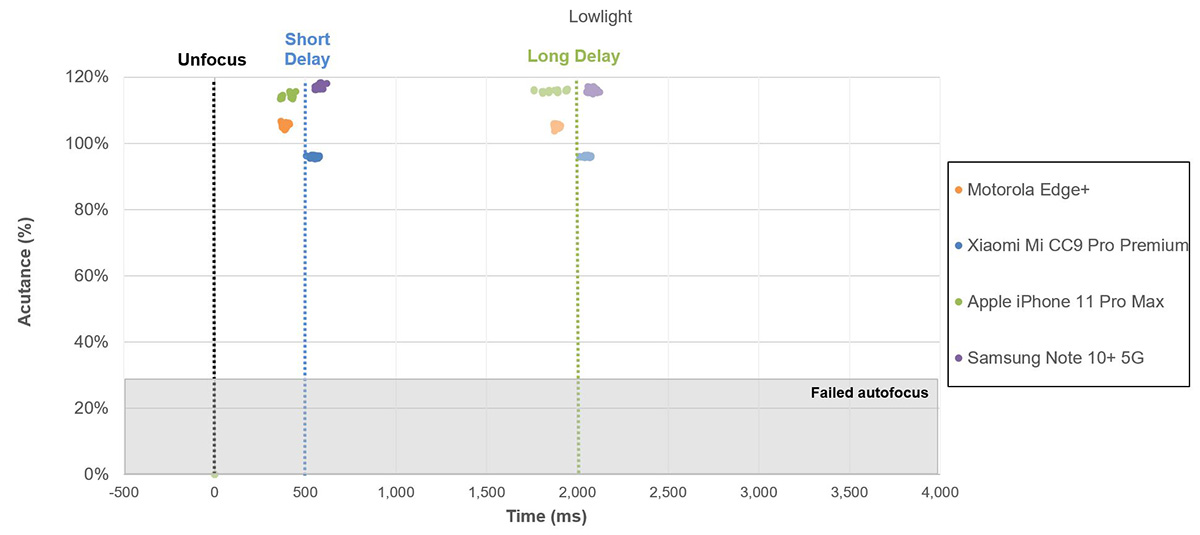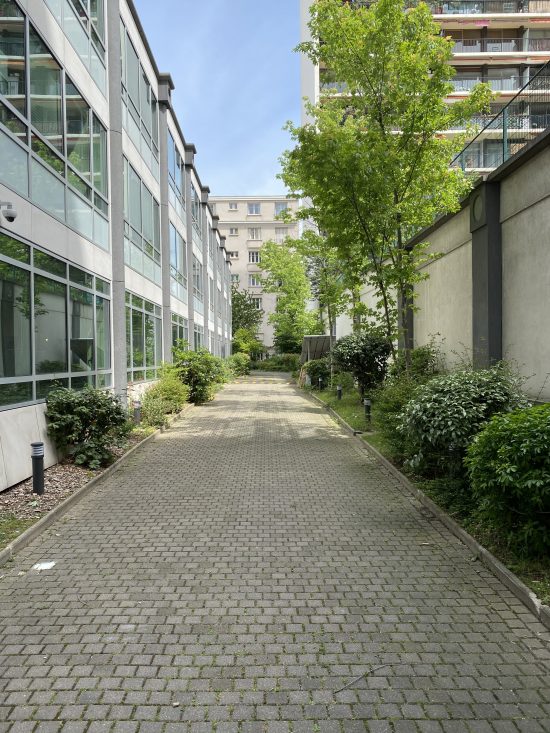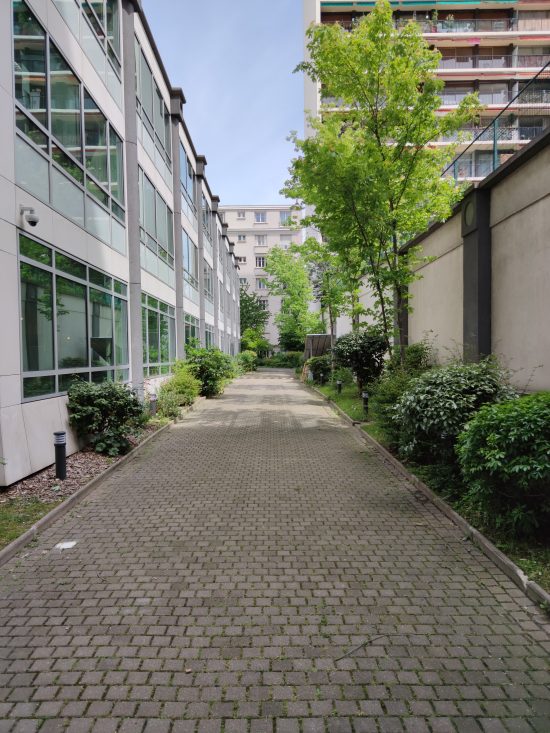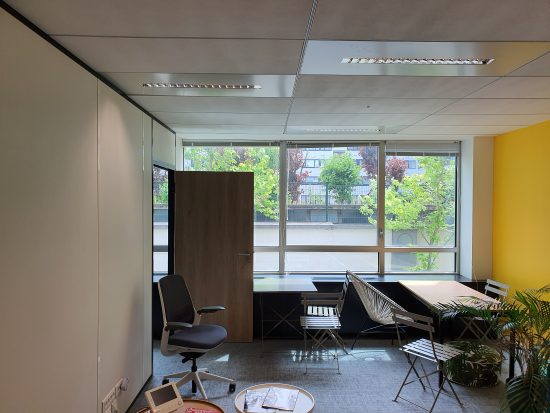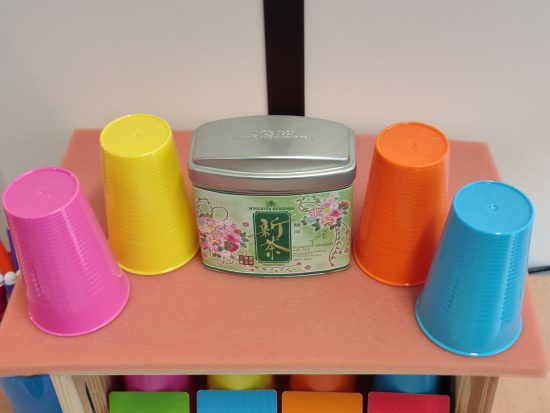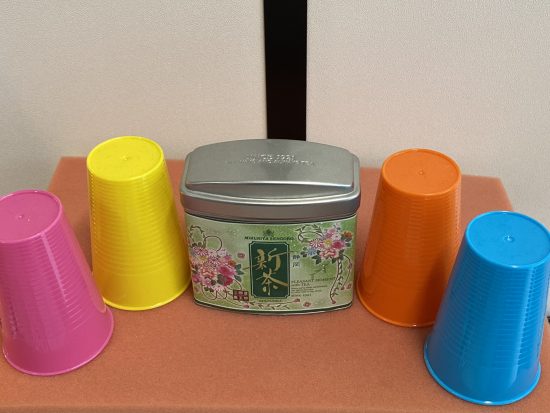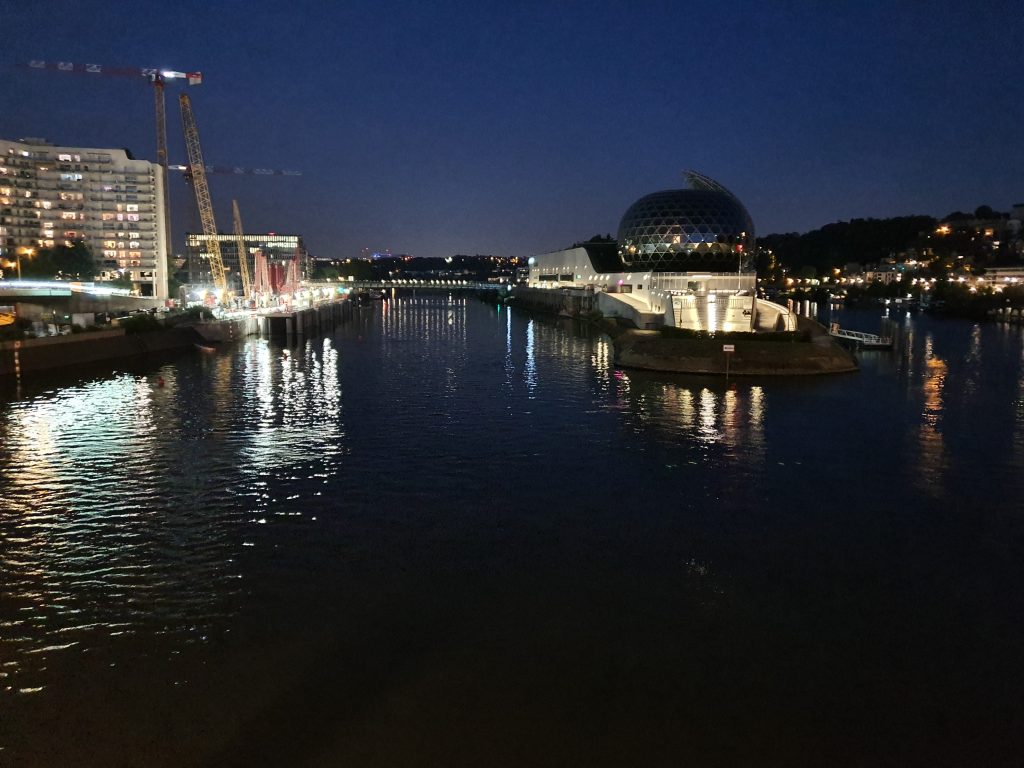While Motorola has developed a reputation for making high-value phones that [glossary_exclude]punch[/glossary_exclude] above their weight, the new Edge+, the company’s first unabashedly premium handset in years, pulls out all the stops and wears a price tag to match. The phone’s signature feature is its 6.7-inch OLED display that flows around the edges making for a nearly bezel-less design. A top-notch Qualcomm 865 chipset runs the show, with 12GB of RAM and 256GB of fast UFS 3.0 storage (no card slot). The Edge+ has three cameras on its back.
The primary camera on the Edge+ features a very high-resolution 1/1.33-inch 108MP sensor that quad-bins output down to 27MP. It also takes advantage of the high pixel count to offer some short zoom functionality with a minimal resolution penalty. Its f/1.8-aperture wide-angle lens is optically stabilized, and focused with on-sensor PDAF.
The Edge+’s tele-camera is a little less exciting, coupling an 8MP PDAF sensor and a stabilized f/2.4 lens to deliver a 3x optical zoom over the main module.

The phone’s ultra-wide camera puts a 16MP sensor behind a 13mm-equivalent f/2.2 lens. Next to the vertical row of imaging cameras, there’s also a laser focus assist sensor.
The Edge+ can record 6K video at 30 fps, an unusual resolution that could be useful if you edit video or have a high-resolution display. It also records 4K at 30 fps, the mode we tested. It will shoot 1080p (the default resolution) at up to 60fps, but there are no ultra-high-speed modes.
Will Motorola’s new flagship storm the heights of our rankings? Read our review to find out.
Key camera specifications:
- Primary: 108MP 1/1.33-inch sensor, 26mm-equivalent f/1.8-aperture lens with PDAF and OIS
- Telephoto: 8MP sensor, 81mm-equivalent f/2.4-aperture lens with PDAF and OIS
- Ultra-wide: 16MP sensor, 13mm-equivalent f/2.2-aperture lens
- Laser focus assist
- Dual-LED flash
- Video: 6K 30fps, 4K 30fps (tested), 1080p (30/60fps), gyro-EIS
About DXOMARK Camera tests: For scoring and analysis in our smartphone camera reviews, DXOMARK engineers capture and evaluate over 1600 test images and more than 2 hours of video both in controlled lab environments and in natural indoor and outdoor scenes, using the camera’s default settings. This article is designed to highlight the most important results of our testing. For more information about the DXOMARK Camera test protocol, click here. More details on how we score smartphone cameras are available here.
Test summary


With an overall Camera score of 113 points, the Motorola Edge+ delivers a respectable performance but falls short of the top echelon in our database, which is dominated by Huawei, Oppo, Xiaomi, Samsung, and Apple. It’s tied with Samsung’s S10+ and the Honor 20 Pro at around 20th place in our DXOMARK Camera rankings. With a good Photo score of 119 points, key strengths of the Edge+ include high detail, low noise, and accurate exposure and autofocus.

The primary camera delivers accurate exposures and the large 108MP sensor captures a lot of information, resulting in plenty of fine texture detail along with low noise, a combination you don’t see every day. Even indoors, detail remains high with a minimum of noise, mainly some fine luminance noise visible in the shadows. Autofocus is accurate and consistent. White balance is generally accurate, though colors, especially in skies, are sometimes undersaturated. Dynamic range is a bit limited, with some clipped shadows and highlights.
The Edge+’s ultra-wide camera echos some of the main module’s strengths, capturing good detail levels outdoors, though texture suffers and noise increases when the lights get dim. Overall, colors are pleasing, with nice green tones. The actual field of view is wide, but not as wide as the best, which holds this sub-score back. There’s also some purple fringing on high-contrast edges, and straight lines sometimes appear to curve due to geometric distortion.
Zooming is not a strong point for this phone’s cameras. Advances in telephoto performance have been exciting in the premium phone segment, with folded optics and high-resolution sensors going a long way towards addressing what has historically been one of the weakest areas of phone camera performance. The Edge+ offers none of that, though to be fair, neither does the iPhone 11 Pro Max, a popular premium handset. With an 8MP sensor and a lens with a 3X zoom factor, detail starts to drop in the medium zoom range and takes a deeper hit at the long end.


The phone’s performance in portrait mode is acceptable but not particularly impressive. There are plenty of edge artifacts when simulating shallow depth of field. Colors look nice outdoors (despite occasional white balance instabilities), but indoor rendering was slightly unnatural. Detail levels are lower than expected overall, and luminance noise is also visible. The portrait mode produced some nice results when shooting flowers up close, with the distant background rendered smoothly out of focus, but for the more typical use of capturing people, performance falls behind most of the competition in this segment.
At night, the Edge+ has a tendency to underexpose a bit, and luminance noise is often visible, though the phone manages to capture acceptable levels of detail. Dynamic range is a bit limited in low light, with highlights blowing out. Flash portraits show accurate exposure and white balance and good detail on the face, but dark backgrounds tend to go completely black.

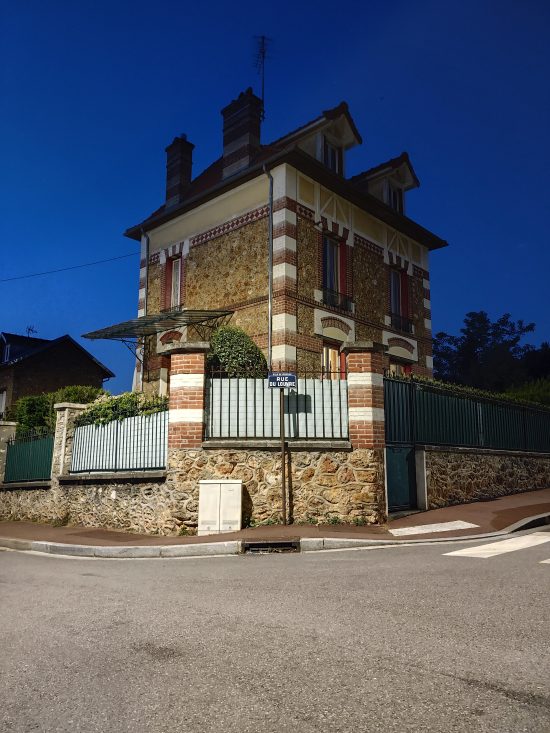
Tested at its 4K 30fps setting, the Motorola Edge+ earned a very good overall Video score of 101. This puts it just one point behind Samsung’s S20 Ultra and Apple’s iPhone Pro Max, and only a few points shy of the top performers in our rankings from Huawei and Oppo. As with stills, the main camera captures a lot of detail with minimal noise. Dynamic range is very good, though shadows sometimes clip to black. Autofocus tracks moving objects effectively. Colors are generally pleasant, though a green cast is sometimes visible indoors. There is some residual motion (poor stabilization) visible in our walking tests and a few artifacts are sometimes noticeable, but overall the phone delivers a strong performance in video mode.
Photo scores explained
The Motorola Edge+ earns a solid Photo score of 119, respectable in absolute terms but outside the circle of the best premium phones available. Basic stills performance is quite strong, but weaknesses in several areas linked to specific features pull the score down. In this section, we take a closer look at how each sub-score was determined and compare image quality against some key competitors.
Exposure and Contrast (94)
The Edge+ scored very well for exposure and contrast. Exposures are accurate and contrast is good all the way down to a very dim 5 lux, with usable but degraded images recorded at a near-dark 1 lux.
In our perceptual analysis, the Edge+ earned a very high score for outdoor images, with accurate exposures and good contrast. Dynamic range is also reasonably wide, though we observed partial highlight and shadow clipping when capturing difficult scenes.
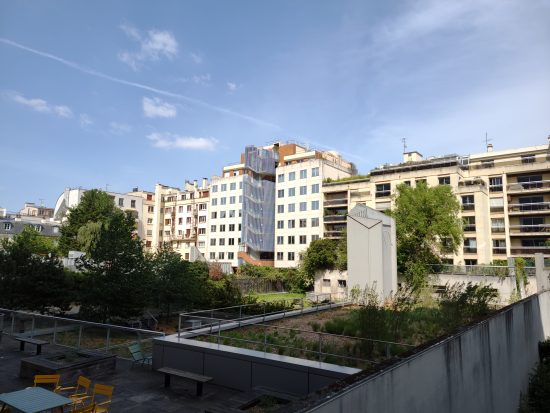

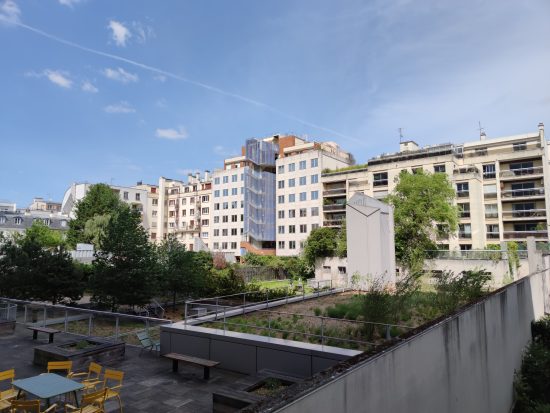
Indoor exposures are also accurate, even in scenes with wide dynamic range, though highlight clipping is sometimes a problem in that case.



Color (87)
Color rendering is a strength for the Edge+, with a sub-score among the best in our database. White balance is usually accurate under all lighting conditions, and colors are generally pleasant. Saturation is occasionally a bit lower than ideal, especially in skies. Slight color shading is rarely visible.
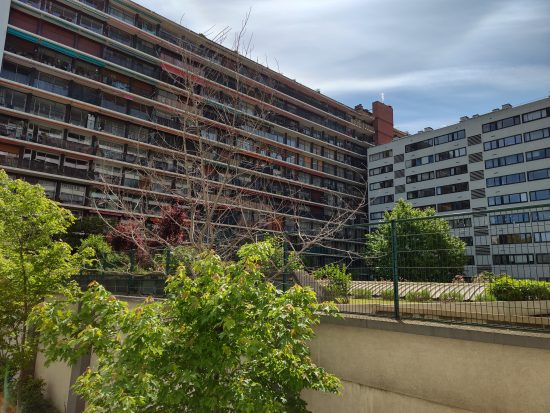
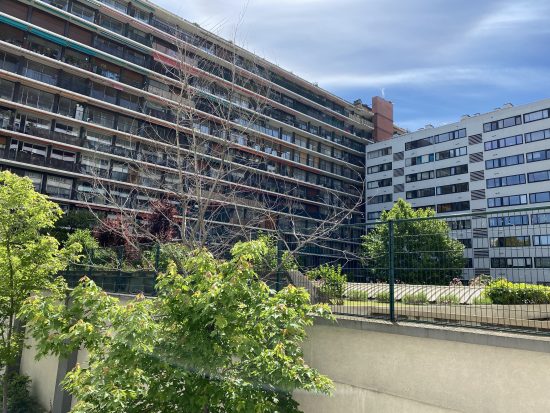
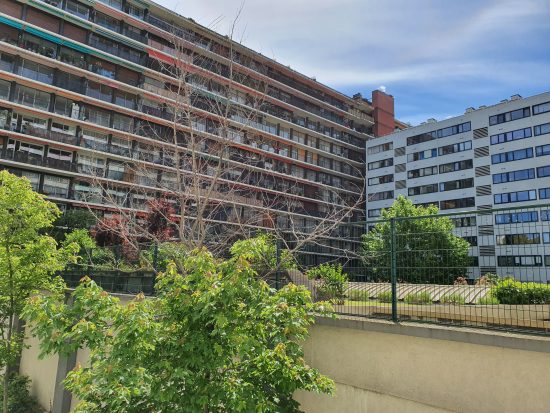
Indoors, colors remain accurate (though warm tones are sometimes slightly undersaturated). A green cast occasionally makes an appearance but is not much to worry about.



Autofocus (97)
Autofocus performance is very good on the Edge+. In our lab tests, accuracy was extremely consistent, with acutance scores of just about 100% for all trials under all conditions. In better light, the phone occasionally took a bit longer to capture the photo, but for all intents and purposes, focus is generally instantaneous.
In the chart showing the results from our low light (20 lux) testing below, we see that for both short and long delays before requesting focus, the Edge+’s results are tightly grouped (and actually slightly over 100% acutance, due to some oversharpening). The phone is actually capturing an image “before” the shutter was pressed, like the iPhone 11 Pro Max, by selecting a frame from its buffer taken a few milliseconds before it detected the shutter release.
Texture (80) & Noise (81)
With its large sensor, the Motorola Edge+ does a very good job of balancing texture and noise. Its sub-scores in these categories are not far off the highest we’ve recorded.
The chart below shows that in bright outdoor light, the high resolution of the Edge+’s main camera is put to good use, recording as much detail as one of Xiaomi’s top phones, but it falls behind the Xiaomi in fairly subdued lighting. It matches or exceeds the detail captured by the iPhone 11 Pro Max in bright outdoor and fairly dim indoor (100 lux) conditions, but it falls behind when it gets darker than that.
Our outdoor test scenes shows what 27 megapixels, well deployed, can record. Like the Xiaomi, the Edge+ manages to catch very fine details that phones with lower resolution sensors can’t match.
The Edge+ controls noise well. In the chart below, we see that although Motorola’s approach leaves a bit more noise in the image than the reference phones, the Edge+ quashes noise nicely as light levels drop. Even though the Xiaomi Mi CC9 Pro Premium does a slightly better job at medium and low light levels, at a near-dark 1 lux, the two are comparable, while the Apple and the Samsung show significantly more noise.
Test shots indoors show that despite some fine luminance noise in darker areas, noise is very well controlled.
Artifacts (70)
The Edge+ loses more points on its Artifacts score than most phones in its class. Softness towards the edges of images is the main culprit here, though we also had to penalize for mild vignetting. Ghosting artifacts were only rarely a problem, along with lens flare and ringing due to oversharpening,
Zoom (73)
Zoom is one of the areas where the best-performing phones distinguish themselves in our testing, but the Edge+, with its 3X lens and 8MP sensor, earns a middling score. It’s only one point shy of the iPhone 11 Pro Max’s score, but even that phone does better in the low zoom range because its 2X lens takes over from the main camera earlier: the Edge+ has to use digital zoom until the 3X zoom level, and despite the high resolution of the main sensor, the results are not particularly impressive.
Going to a medium zoom range beyond 3X, the Edge+ has to crop from the 8MP sensor in the tele-module, and details soften. Luminance noise becomes noticeable. At the long end of the zoom, detail suffers substantially. The phone generates 27MP images regardless of the camera module used, presumably to match the output of the main camera. At the long end of the zoom range, this means that a close crop from an 8MP sensor is upsampled tremendously. The results are not meant to be viewed at 100% on a screen.
Bokeh (55)
The Motorola Edge+ did not score particularly well in our simulated bokeh tests. More artifacts around the borders between in-focus and out-of-focus areas are visible than we see with phones that excel in this metric. Even the best portrait modes struggle with challenges like flyaway wisps of hair, but the Edge+ also fumbles simpler tasks like separating a cleanly defined shoulder from distant background.
There is also a noticeable loss of detail on in-focus areas in both bright and low light. Colors are pleasant outdoors, but in low light they sometimes look unnatural.
It’s worth noting that the main camera’s sensor is large enough to create some natural out-of-focus areas at reasonably short subject distances.
Wide (34)
The Edge+ delivers pretty good image quality with its dedicated wide camera, but its true field of view is not as wide as some of its competitors. Although the ultra-wide camera comes with a 13mm-equivalent specification, according to our measurements, the field of view is closer to 16mm equivalent in reality.



The lack of coverage holds this score back, even though outdoors, detail is fairly high (for a wide camera) and colors are vivid and pleasantly rendered. Detail drops towards the edge of the frame, and fine luminance noise is visible. The mentioned distortion also costs points, and is something to watch out for, particularly when shooting architecture.
Indoors in typical warm lighting, the ultra-wide camera delivers an impressively neutral color balance compared to the reference phones. Dynamic range is less impressive, with obvious loss of highlights around the lightbulb.
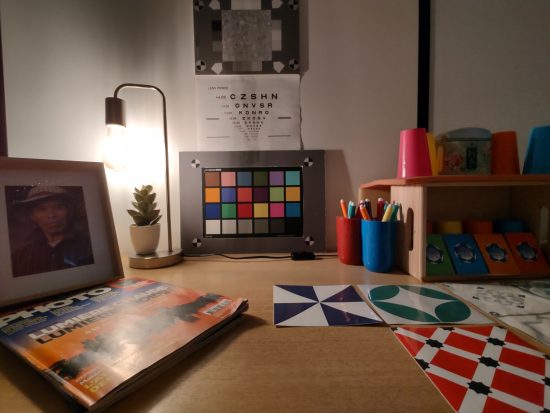

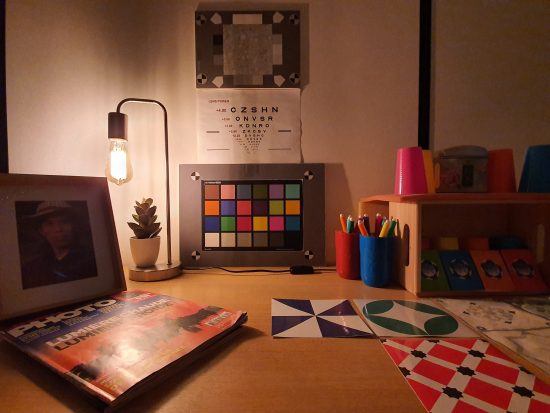
The Edge+’s ultra-wide camera has a neat trick up its sleeve: it can focus ultra-close. The ability to shoot at macro distances down to 3 cm opens up some interesting creative possibilities.

Night (47)
Night photography is not a particular strength for the Edge+. For people in the dark, the auto-flash mode captures a slightly underexposed face with lots of detail — but the background goes black, giving portraits that “floating in space” feel that is not usually what you want. Phones that handle this situation better let the background burn in a bit to avoid this.



Forcing the flash off produces acceptable images with accurate exposure, but reduced dynamic range that leads to clipped highlights. Noise is kept fairly low at the expense of some fine detail, and some luminance noise is still sometimes visible towards the edges of the image. In the nighttime cityscape scene below, both the Samsung and the Xiaomi retain more highlight information in the brightly-lit construction area than the Edge+. The Samsung leaves more noise in the image but also keeps more detail, and the Xiaomi manages to nicely balance the two.
Video scores explained
A phone’s overall Video score is derived from a wide range of test results in the same way as the Photo score. Tested in its 4K/30fps mode, the Edge+ achieved the following scores: Exposure (88), Color (89), Autofocus (97), Texture (81), Noise (82), Artifacts (76), and Stabilization (92). In this section, we take a closer look at the device’s strengths and weakness for video, with some comparisons against the competition.
In our lab tests, the Motorola Edge+ captured accurately exposed video in conditions ranging from dim tungsten illumination to bright sunlight. The chart below shows the Edge+ maintaining proper exposure down to a very dark 7 lux.

Videos generally capture reasonably wide dynamic range, but we noticed some clipping in shadows in outdoor testing.
The strengths of the Edge+’s large, high-resolution sensor that we noted in still photography carry over here, with 4K videos showing very good texture (high levels of detail). The phone meets or exceeds the performance of the reference handsets all the way down to near-darkness, when the other phones overtake it (though by that point all perform poorly in practical terms).
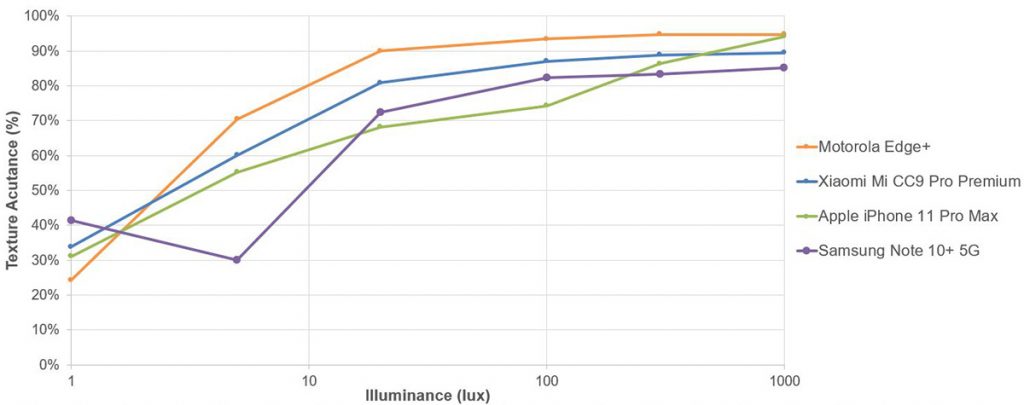
Lots of detail is good, but keeping detail while suppressing noise is better, and the Edge+ manages to balance the two neatly in its videos. In the chart below we see that spatial noise, measured for individual video frames, is at or below noise levels for the reference phones. In bright light, the Samsung Note 10+ 5G matches the Edge+’s impressive low noise performance, but referring to the texture chart above, it’s clear that it does so at the expense of detail, which the Edge+ retains. The other phones are noisier even in bright light, despite capturing less detail. The Samsung falls away as light levels drop, and the other phones sometimes approach the Edge+’s low noise, but never meet it.

The Edge+ loses some points in its artifact score for video due to ringing, a fairly common artifact that arises from oversharpening, and for color quantization (in which transitions are visible in what should be smooth color gradients). A green color cast is sometimes visible when shooting indoors.
The phone’s autofocus is very good in video mode: fast, accurate, and reliable in both bright and low light. Effective tracking follows moving subjects and keeps them in focus. Stabilization is good overall, though some residual movement is visible when shooting video while walking.
Conclusion
With the Edge+, Motorola fans finally have a no-holds-barred premium option. The phone’s main camera can, for the most part, wear that mantle with pride: it captures highly detailed photos with low noise. Dynamic range is not as good as the best, but not bad, and despite some color saturation issues, few users should be disappointed with it.
But the days when a phone could impress with one camera are far behind us, and the DXOMARK Camera score takes into account a number of performance elements beyond basic photography. The Edge+ loses points for zoom (which does not successfully zoom very far) and for its wide camera (which is not as wide as some). Its portrait mode is uninspiring, and photos show more artifacts than the best of the competition. The phone’s sub-scores in these categories drag the overall score below what we expect from a current flagship phone with premium pricing.
The Edge+ can certainly take great pictures, and its very good video performance is appropriate for its class. Potential users must decide whether the aspects of the Edge+ that could use improvement are important to their personal mobile photography style.
Photo
Pros
- Detail is very high
- Noise is well controlled
- Exposure is accurate
- White balance is accurate and consistent
- Dedicated wide camera captures high detail
Cons
- Soft detail at medium zoom, details lost at long zoom range
- Soft corners and edges, vignetting, and ringing artifacts
- Undersaturated skies and warm tones indoors
- Dynamic range not as wide as the best
- Depth estimation artifacts, softness in subject, and unnatural indoor colors in portrait mode
- Slight underexposure at night, luminance noise visible
Video
Pros
- Exposure is accurate
- High detail under most conditions
- Noise is well controlled
- Effective tracking autofocus
Cons
- Strong green cast visible indoors
- Ineffective stabilization while walking
- Clipped shadows outdoors
- Ringing and color quantization sometimes visible
The post Motorola Edge+ Camera review appeared first on DXOMARK.
